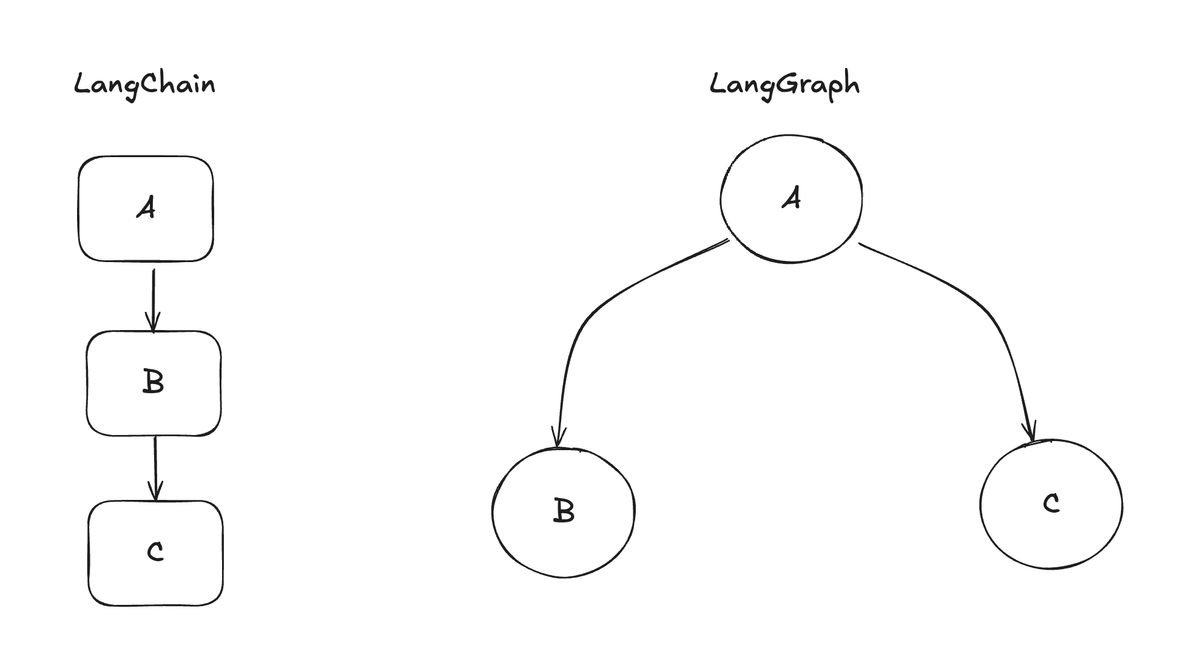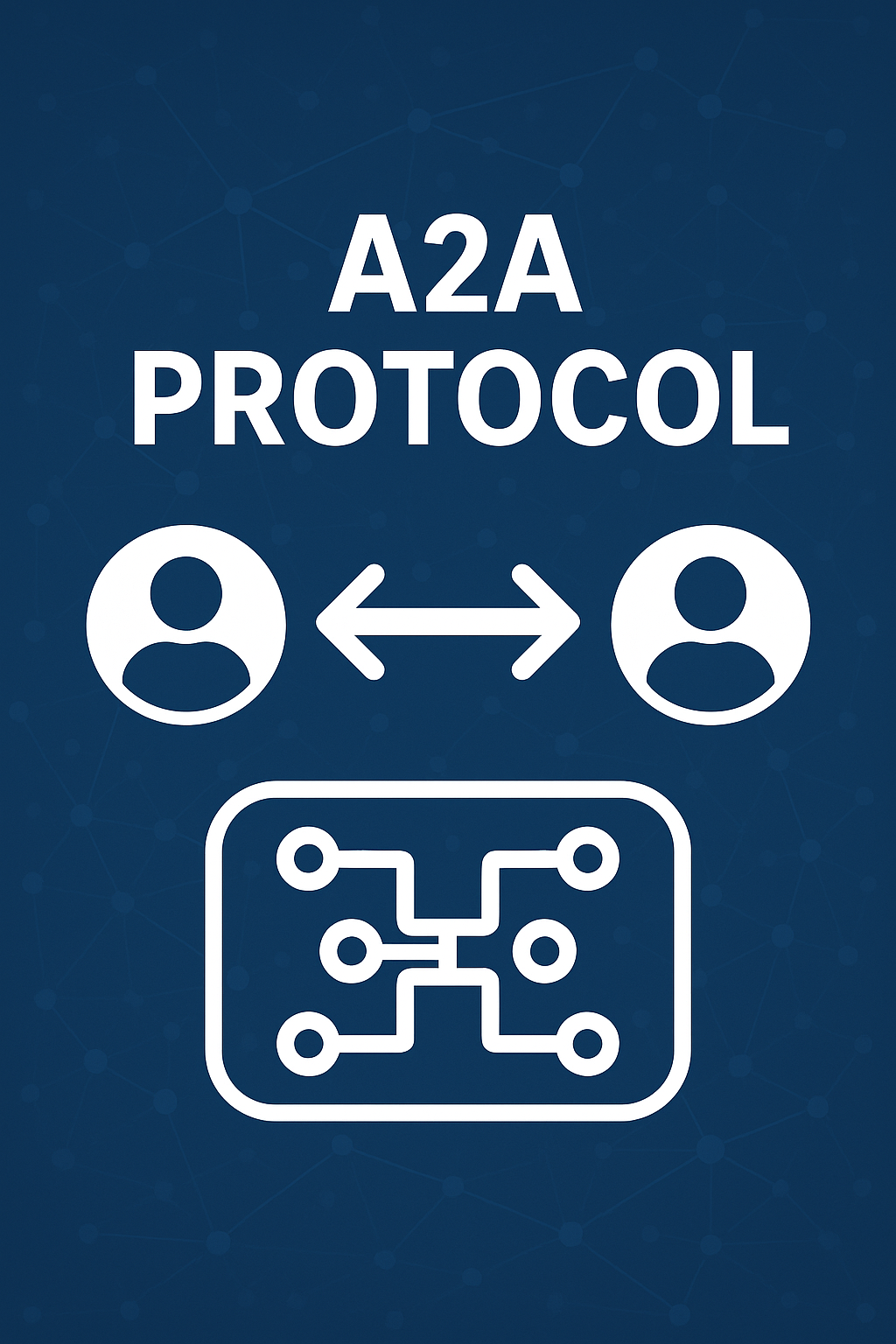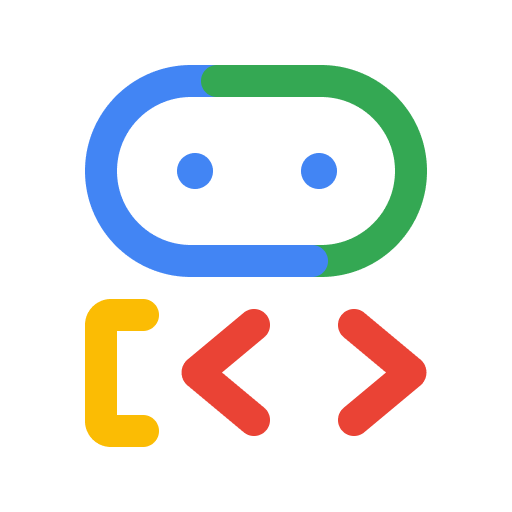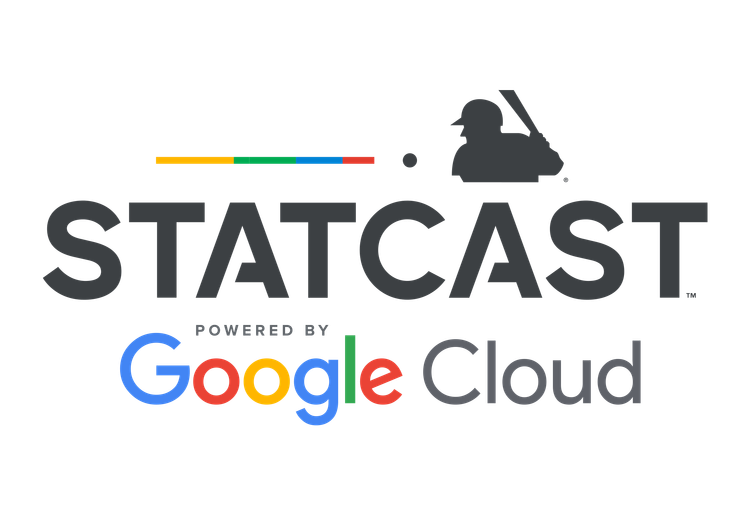The Architect's Advantage: Why Google Cloud's Agent Development Kit is a Game-Changer for Building Sophisticated AI Agents
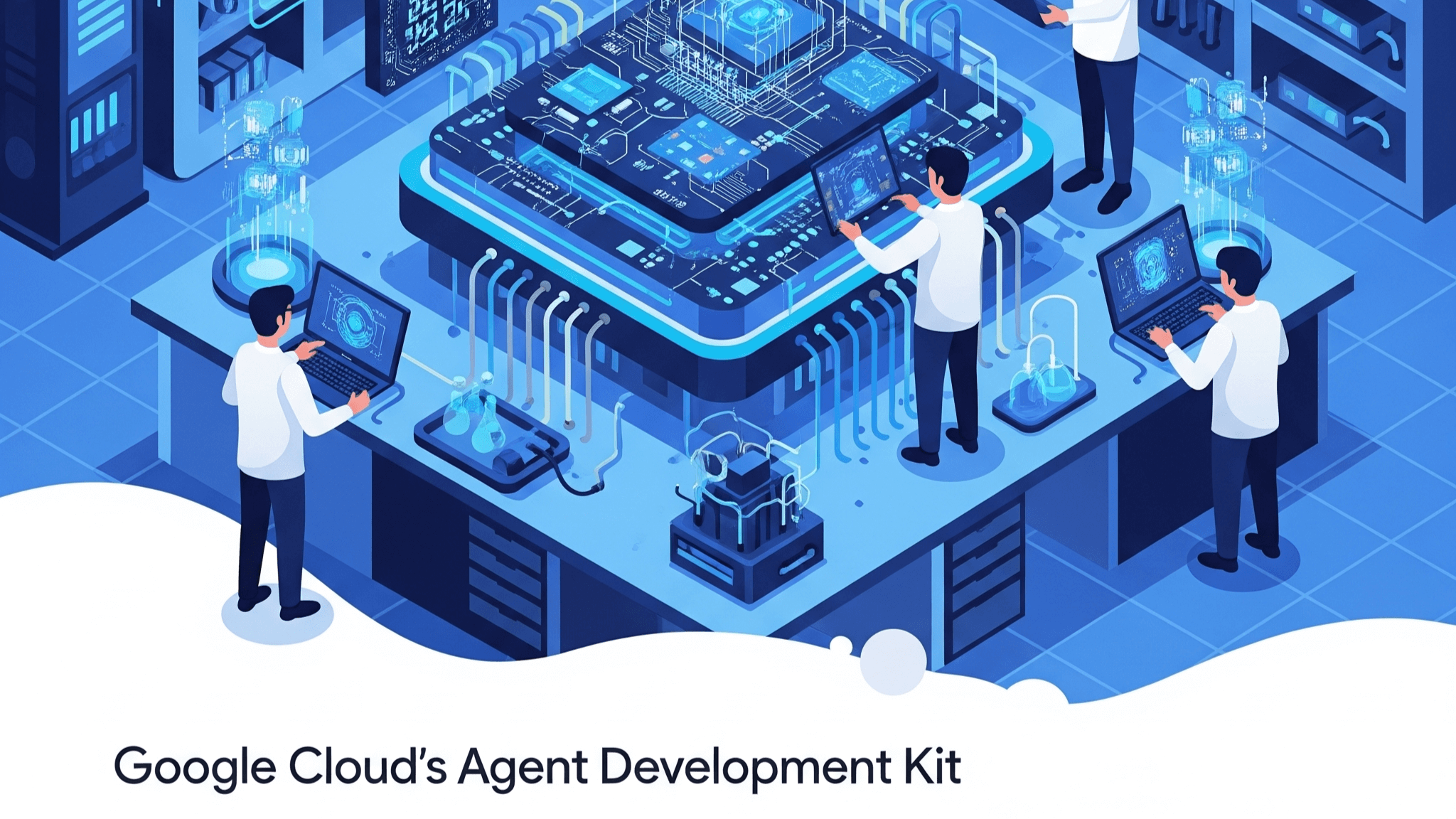
The world of artificial intelligence is no longer confined to chatbots and simple automations. We are entering the era of sophisticated AI agents – autonomous, intelligent entities capable of complex reasoning, planning, and tool use. For developers and businesses, this presents a monumental opportunity to build transformative applications that can streamline workflows, enhance customer experiences, and unlock new frontiers of innovation. However, building these advanced agents requires more than just a powerful large language model (LLM); it demands a robust framework that can orchestrate complex interactions, manage state, and integrate seamlessly with a multitude of tools and services.
Enter Google Cloud's Agent Development Kit (ADK), a powerful, open-source framework designed to address the challenges of building and deploying production-grade AI agents. Released at Google Cloud NEXT 2025, ADK is not just another library for interacting with LLMs. It is a comprehensive toolkit that provides the architectural foundation and developer-friendly abstractions necessary to construct complex, multi-agent systems with precision and control.
This blog post will serve as a deep dive into the advantages of Google Cloud ADK, offering a technical exploration of its core features and how they empower developers to build the next generation of AI agents. I will also provide a comparative analysis with other popular agent development frameworks and equip you with the resources to begin your journey with ADK.
The Core Tenets of Google Cloud ADK: Beyond Simple Prompting
At its heart, ADK is built upon a set of principles that cater to the intricacies of advanced agent development. It moves beyond the linear, request-response paradigm of many early-stage AI applications and embraces a more holistic, system-oriented approach. Here are the key advantages that set ADK apart:
1. Multi-Agent Systems by Design:
One of the most significant architectural advantages of ADK is its inherent support for multi-agent systems. Instead of a single, monolithic agent attempting to handle a wide array of tasks, ADK encourages a modular approach where you can compose a team of specialized agents. Each agent can have its own distinct purpose, tools, and even underlying LLM.
This hierarchical and collaborative structure offers several benefits:
- Specialization and Expertise: You can create agents that are experts in specific domains, such as a "research_agent" for information retrieval, a "coding_agent" for generating and executing code, and a "communication_agent" for user interaction. This leads to more accurate and efficient task execution.
- Scalability and Maintainability: Breaking down a complex problem into smaller, manageable agent-led tasks simplifies development and makes the overall system easier to scale and maintain.
- Resilience and Fault Tolerance: If one agent in the system encounters an error or fails to complete a task, the orchestrating agent can delegate the task to another agent or implement a fallback mechanism, leading to more robust applications.
2. Granular Orchestration and Control:
ADK provides developers with fine-grained control over the flow of execution within an agentic system. This is a crucial departure from more "black-box" frameworks where the LLM's reasoning path can be opaque and unpredictable. With ADK, you can define explicit workflows, decision points, and communication patterns between agents. This is achieved through:
- Explicit Agent Definition: You define the capabilities and behaviors of each agent, including the tools they have access to and the prompts that guide their reasoning.
- Orchestrators: ADK provides orchestrators that manage the interaction between agents. You can implement rules-based, deterministic orchestration for predictable workflows or leverage an LLM-powered orchestrator for more dynamic and adaptive task routing. This allows for a blend of explicit control and intelligent automation.
3. A Rich and Extensible Tooling Ecosystem:
An agent's power lies in its ability to interact with the outside world. ADK provides a robust framework for integrating a wide array of tools, including:
- Standard Library of Tools: ADK comes with a set of pre-built tools for common tasks like web search, calculations, and code execution.
- Custom Tool Integration: You can easily create and integrate your own custom tools, whether they are simple Python functions or complex API integrations.
- Seamless Integration with Google Cloud Services: As a Google Cloud product, ADK offers native and optimized integrations with services like Vertex AI for model hosting and training, Google Search for real-time information retrieval, and various Google Cloud APIs. This tight integration simplifies the process of building agents that can leverage the full power of the Google Cloud ecosystem.
4. First-Class Support for State Management and Memory:
For an agent to engage in meaningful, multi-turn conversations and perform complex, long-running tasks, it needs a memory. ADK provides built-in mechanisms for managing both short-term and long-term memory. This allows agents to recall previous interactions, maintain context throughout a conversation, and learn from past experiences. This is a critical feature for building personalized and intelligent user experiences.
5. A Developer-Centric Experience:
Google Cloud has placed a strong emphasis on making the development lifecycle with ADK as smooth and efficient as possible. This includes:
- Local Development and Testing: ADK provides a local development server and a web-based UI for testing and debugging your agents before deploying them to the cloud. This allows for rapid iteration and a more interactive development process.
- Observability and Debugging: The framework includes built-in logging and tracing capabilities, giving you deep insights into the inner workings of your agents. You can visualize the entire execution flow, inspect the inputs and outputs of each step, and quickly identify and resolve issues.
- Flexible Deployment Options: Once your agent is ready, you can easily deploy it to a variety of targets, including Google Cloud Run for serverless execution or Google Kubernetes Engine (GKE) for more complex, containerized deployments.
ADK in the Landscape of Agent Development Frameworks: A Comprehensive Comparison
To fully appreciate the value proposition of Google Cloud ADK, it's essential to understand its position within the broader ecosystem of agent development frameworks. The following sections provide a detailed comparison with other leading platforms, categorized by their primary focus.
Overview Table: Google Cloud ADK vs. The Field
Framework | Category | Advantages of Google Cloud ADK | Disadvantages of Google Cloud ADK |
Amazon Bedrock Agents | Cloud-Based | Open-source flexibility, more granular control over orchestration. | Less mature as a fully managed service, requires more hands-on management. |
Microsoft Azure Bot Service | Cloud-Based | Superior multi-agent orchestration, designed for complex task automation beyond conversational AI. | More complex for simple bot development. |
IBM watsonx Assistant | Cloud-Based | More general-purpose and extensible for a wider range of agentic tasks beyond customer service. | Less specialized for enterprise-grade conversational AI out-of-the-box. |
Amazon Lex | Cloud-Based | More powerful for building complex, stateful agents; not limited to conversational interfaces. | Steeper learning curve for simple voice and text bots. |
LangChain | Open-Source | Architected for multi-agent systems from the ground up, more robust for enterprise deployment. | Smaller community and fewer pre-built integrations compared to the more established LangChain. |
CrewAI | Open-Source | More comprehensive with built-in state management, tooling, and deployment options. | Less focused on the specific niche of collaborative multi-agent systems. |
AutoGen | Open-Source | More structured approach to agent definition and orchestration, better for predictable workflows. | Less focused on conversation-driven agent development. |
Rasa | Open-Source | Tighter integration with a major cloud provider's AI/ML ecosystem. | Less focused on on-premise deployment and a purely open-source NLU pipeline. |
LlamaIndex | Open-Source | A more complete agent framework with orchestration and multi-agent capabilities. | Less specialized for data-centric agent tasks like document Q&A. |
Semantic Kernel | Open-Source | A more opinionated and complete agent framework, reducing boilerplate code. | Less language-agnostic (primarily Python-focused for now). |
Lindy | No-Code/Low-Code | Full-code flexibility and extensibility for developers. | Not suitable for non-technical users seeking a no-code solution. |
Stack AI | No-Code/Low-Code | Deeper control and customization for complex agent behaviors. | Requires coding expertise, unlike the drag-and-drop interface of Stack AI. |
Flowise | No-Code/Low-Code | More robust for building production-grade, scalable agents. | Not a low-code platform; requires programming knowledge. |
OpenAI Assistants API | Other Platforms | Open-source and vendor-agnostic in terms of LLMs. | Requires more setup and management for persistent agents and memory. |
Agno | Other Platforms | More comprehensive feature set, including multi-agent orchestration and rich tooling. | Not as lightweight or focused on pure speed. |
FastAgency | Other Platforms | A more holistic framework with better support for state management and complex workflows. | Less specialized for ultra-low latency, real-time applications. |
Mastra | Other Platforms | Python-centric, benefiting from a larger AI/ML ecosystem. | Not ideal for developers who prefer a TypeScript-first approach. |
In-Depth Comparison
Cloud-Based Platforms
For enterprises committed to a specific cloud provider, the choice of an agent framework is often influenced by the existing technology stack.
- vs. Amazon Bedrock Agents: Amazon Bedrock Agents is a strong contender for organizations heavily invested in AWS. It offers a fully managed experience and seamless integration with AWS services. However, ADK's open-source nature provides greater flexibility and avoids vendor lock-in. For teams that require fine-grained control over the orchestration logic and the ability to customize the underlying framework, ADK presents a more compelling option.
- vs. Microsoft Azure Bot Service: Azure Bot Service excels at building and deploying conversational bots across various channels. Its strength lies in its integration with Azure Cognitive Services. ADK, in contrast, is designed for more than just conversational interfaces. Its core competency is the orchestration of complex, multi-step tasks that may or may not involve direct user interaction. For building sophisticated backend automation and multi-agent systems, ADK is the more powerful choice.
- vs. IBM watsonx Assistant: IBM's watsonx Assistant is a leader in the enterprise conversational AI space, particularly for customer service applications. It boasts advanced NLP capabilities and robust integration features. While ADK can be used to build conversational agents, its primary focus is on providing a general-purpose framework for a wider range of agentic applications. For use cases that extend beyond customer support and require complex tool use and multi-agent collaboration, ADK offers greater extensibility.
- vs. Amazon Lex: Similar to Azure Bot Service, Amazon Lex is optimized for building conversational interfaces for applications using voice and text. Its pay-per-use model is attractive for simple chatbot development. However, for building stateful, long-running agents that can perform complex tasks, ADK's architecture is far more suitable.
Open-Source Frameworks
The open-source community has been a hotbed of innovation in agent development.
- vs. LangChain: LangChain was a pioneer in popularizing LLM application development. Its strength lies in its vast library of integrations and its active community. However, LangChain's core abstraction, the "chain," can become cumbersome for managing complex, non-linear agent interactions. ADK, with its explicit focus on multi-agent systems and orchestration, provides a more structured and scalable approach for building enterprise-grade agentic applications.
- vs. CrewAI & AutoGen: CrewAI and AutoGen are excellent frameworks for exploring the dynamics of collaborative and conversation-driven multi-agent systems, respectively. They are valuable tools for research and building specialized agent teams. ADK, however, offers a more comprehensive solution with built-in state management, a richer tooling ecosystem, and streamlined deployment to the cloud. It is a more production-ready framework for building and managing complex agentic systems at scale.
- vs. Rasa: Rasa's strength is its focus on on-premise deployment and its customizable NLU pipeline for conversational AI. For organizations with strict data privacy requirements or the need for a highly tailored conversational experience, Rasa is a strong choice. ADK's advantage lies in its tight integration with the Google Cloud ecosystem, making it easier to leverage cutting-edge AI/ML services and scale effortlessly.
- vs. LlamaIndex & Semantic Kernel: LlamaIndex excels at connecting LLMs to external data sources, making it a powerful tool for building data-centric agents. Semantic Kernel, a Microsoft open-source SDK, offers a multi-language approach to integrating AI into applications. Both are valuable components of the agent development landscape. ADK, however, provides a more holistic and opinionated framework that brings together data access, tool use, and multi-agent orchestration into a cohesive whole, reducing the need to piece together multiple libraries.
No-Code/Low-Code Platforms
For users without a development background, no-code and low-code platforms offer an accessible entry point into the world of AI agents.
- vs. Lindy, Stack AI, & Flowise: Platforms like Lindy, Stack AI, and Flowise are excellent for business users and citizen developers who want to automate workflows and build simple AI agents without writing code. They offer intuitive drag-and-drop interfaces and pre-built templates. ADK, as a full-code framework, is not a direct competitor to these platforms. It is designed for developers who need the full power and flexibility of a programming language to build custom, complex, and highly scalable agentic systems.
Other Platforms and Frameworks
This category includes a diverse set of tools with unique value propositions.
- vs. OpenAI Assistants API: The OpenAI Assistants API provides a powerful and developer-friendly way to build persistent GPT-powered agents. Its built-in memory and tool use capabilities are a significant advantage. ADK, being open-source, offers greater flexibility in terms of the underlying LLMs you can use and is not tied to a specific model provider. This can be a crucial factor for organizations looking to avoid vendor lock-in and leverage a diverse set of models.
- vs. Agno, FastAgency, & Mastra: These frameworks are designed with specific goals in mind, such as lightweight design (Agno), high performance (FastAgency), and a TypeScript-first approach (Mastra). They are excellent choices for developers who prioritize these specific characteristics. ADK's strength lies in its comprehensive feature set and its focus on building robust, production-grade systems. While it may not be the most lightweight or the absolute fastest in all scenarios, it provides a well-rounded and scalable solution for a wide range of agentic applications.
Resources for Your ADK Journey:
Start here:

Conclusion: The Future is Agentic, and ADK is a great option
The development of sophisticated AI agents is poised to be one of the most transformative technological shifts of our time. Google Cloud's Agent Development Kit provides a powerful and well-architected foundation for developers who want to be at the forefront of this revolution. By embracing a multi-agent approach, providing granular control and orchestration, and offering a seamless developer experience, ADK empowers you to move beyond simple chatbots and build truly intelligent and autonomous systems.
Whether you are an experienced AI developer or just beginning your journey into the world of agentic AI, Google Cloud ADK offers the tools and the paradigm to turn your most ambitious ideas into reality. The future is being built by agents, and with ADK, you have the architect's advantage.
